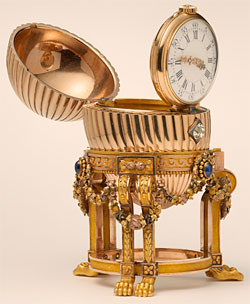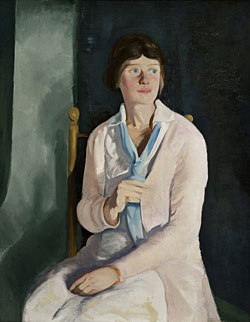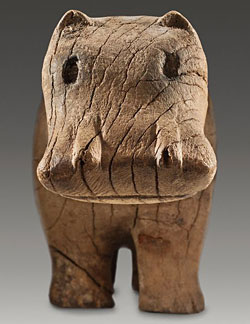The Art Market: Fabergé hunt; Scandi Warhol; new fair for New York

Simply sign up to the Life & Arts myFT Digest -- delivered directly to your inbox.
Just before Easter, London jeweller and Fabergé specialist Wartski put on display, for just four days, the rediscovered Third Imperial Fabergé Egg. One of three missing eggs, all believed to be definitively lost, the tiny, jewel-encrusted piece re-emerged from somewhere in the middle of the northeastern US two years ago, and has now been sold to a private buyer in a deal brokered by Wartski.
At around the same time, Sotheby’s announced that it would sell, in May in New York, one of three seven-foot-tall polished steel “Popeyes” by Jeff Koons. The estimate is about $25m. Meanwhile, a 40-inch-high Koons Easter Egg, on offer in a Paddle 8 online auction, had attracted bidding up to $360,000 (“estimate: priceless”) before Good Friday.
While Wartski refused to put any price on “its” egg, the prices for these precious artefacts are huge: the Third Imperial Egg has been reported to be tagged at £20m. In 2007 the ornate but non-Imperial Rothschild Egg sold for almost £9m at auction, going to Russian collector Alexander Ivanov, who has a Fabergé museum in Baden-Baden.
There’s an interesting parallel here. In its time, Fabergé made trophies for the extremely rich, and these dazzling baubles gave huge bragging rights to their owners – indeed, they are still highly sought after today. The same could be argued for Koons, whose vast shiny tchotchkes have achieved a similar status among newly minted billionaires – although the jury is still out on their staying power. At least it would be more difficult to mislay a Koons.
By the way, if you want to try your luck, there are two Imperial eggs known to have survived the Russian Revolution but still missing: the 1888 “Cherub with Chariot”, and the 1889 “Nécessaire”, which Wartski last saw in June 1952.
…
The Swedish auction house Bukowskis is celebrating its biggest consignment ever: Andy Warhol’s silkscreen “The Last Supper”, which is being offered on May 14 at an estimate of $8.6m-$11.6m. It is the most expensive work of art ever to be sold at auction in the country, and comes from a private collection. The unidentified consignor has “ties to Sweden” but is not Swedish, according to the auction house.
“The Last Supper” series was commissioned from Warhol by the Credito Valtellinese Gallery, sited just beside Milan’s Santa Maria delle Grazie, where Leonardo da Vinci painted “The Last Supper” fresco. Warhol’s series was completed in 1987 and shown at the gallery just one month before his death.

According to chief executive Michael Storåkers, Bukowskis obtained the consignment because the auction house, with sales in 2013 of just over $102m, “has become a bigger player in the market”. “The auction scene is becoming less geographically dependent,” he said. And inevitably, the strength of the market for contemporary art is significant: Bukowskis has separated this segment from modern sales and has seen it quadruple since 2010.
…
“Too many art fairs” is a common complaint in the market – but this has not stopped New York advisory group Artvest from taking on a challenge: buying and repositioning the art-and-antiques Spring Show. The reason is simple, says Michael Plummer of Artvest: “We believe that selling art is increasingly going through fairs [rather than galleries] and we wanted a stake in this.”
Plummer and his team have renamed the event (founded in 2011 by the Art and Antique Dealers League of America) Spring Masters New York, and brought in architect Rafael Viñoly to upgrade the design. Viñoly has come up with a hexagonal booth layout and will transform the venue – the somewhat sinister and gloomy Park Avenue Armory – with dramatic lighting and arrays of spring flowers. Out go the traditional lines of square booths: “It will be more like a souk, more of an adventure,” says Plummer.

The scope of the event has been tweaked too, bringing in 41 dealers and spanning objects from antiquities to 20th-century design. “The traditional art scene in New York has been quite stagnant – there is nothing quite like London’s Masterpiece here,” says Plummer. “So we are aiming to have something of its look and feel.” The fair opens to the public on May 1.
…
As the art market has grown and globalised, so have the risks and uncertainties. With prices booming – even if only for a small group of artists – questions of authenticity and even right title are fundamental. And while the temptation is for outsiders to pile into a market that is apparently in constant growth, the opaque trading practices of the main players – auctioneers, dealers and leading collectors – should make them wary.
A new book, Risk and Uncertainty in the Art World (Bloomsbury), edited by Anna Dempster, senior lecturer in art business at Sotheby’s Institute, explores many of these issues in a series of essays. Some look at the past – dealers’ “rings” in 18th-century France, or the investment performance of violins and stamps. Others look to the future and the challenges of today’s rapidly changing market. Anders Petterson of ArtTactic, for instance, predicts a radical shift in the profile of the “tastemakers” of tomorrow. Lecturer Tom Flynn poses some pertinent questions about the consequences of today’s practice of “fabricators” being entirely responsible for the production of works of art, with some artists not having the skills to make them themselves.
What do the notions of authenticity and originality mean in such cases, particularly in the cases of unauthorised copying? And Sotheby’s director Tom Christopherson sees the newly expanded market as presenting an exciting opportunity – even if its diversity makes the application of investments models from other markets “a somewhat hazardous business”, as he writes.
——————————————-
Georgina Adam is art market editor-at-large of The Art Newspaper
Comments